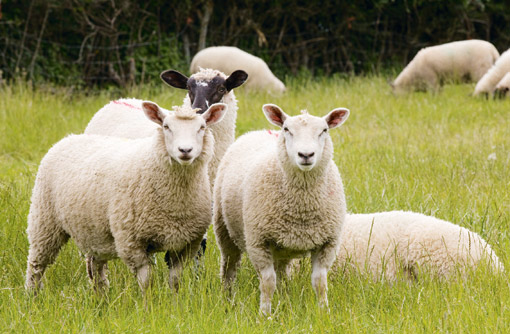Control costs to make money from store lambs

Having a firm grip on costs of production will be vital when finishing store lambs this season. Jeremy Hunt reports
Store lambs should still be able to make money this season, provided finishers tighten up on their awareness of the buying-in price, length of time to finish and feed costs involved.
Finishing store lambs has always been one of the riskiest ways of trying to make a profit out of sheep. But having greater control of the cost element – not just in terms of the actual cost of feed, but how much is needed to turn a batch of store lambs into finished lambs – is the key, says EBLEX beef and sheep scientist Liz Genever.
Finishers are being urged to look ahead to next autumn and winter and consider the potential of forage crops, to try and avoid the problems being increasingly encountered with late-season grazing quality.
Forage crops
“Forage crops are a really good option for store lambs and deserve a closer look for those who don’t traditionally use them,” says Dr Genever.
“No one wants a repeat of the grazing and feed pressures we had last winter – and it may have dented confidence among some producers who could decide to sell store lambs this year rather than finish them.
“It isn’t unusual to find finishers whose feed costs for their store lamb business doubled last season compared with the year before,” she says.
Store finishing budgets
How much should you pay for stores?
- Short-keep lambs sold at 20kg (estimated finishing costs £12, 1% mortality) and costing £50 will only start to leave a profit (£12.54) when the selling price reaches £3.80/kg
- Short-keep lambs bought at £75 will only start to leave a profit (£11.30) when the selling price reaches £5/kg
- Medium keep lambs sold at 21kg (estimated finishing costs £21.73, 1.5% mortality) and costing £45 will start to leave a profit (£11.87) when the price reaches £3.80/kg
- Medium-keep lambs bought at £75 will only start to leave a profit (£11.70) when the selling price reaches £5/kg
- Long-keep lambs sold at 22kg (estimated finishing costs £22, 2% mortality) and costing £30 will only start to leave a profit (£11.93) when the selling price reaches £3.80/kg
- Long-keep lambs bought at £65 will only start to leave a profit (£11.42) when the selling price reaches £5.40/kg
A breakdown of these margins based on buying-in price, selling weight and market price are available from www.eblex.org.uk
However, strict calculations on anticipated costs will provide the basis for profit next season, Dr Genever adds.
“Finishers have more control over the costs involved in store lamb finishing than many realise. If there’s a variety of lambs coming into the system – some short keep, medium keep or long keep – each type needs to be allocated into specific groups so the feed going into them is being used most efficiently and earning the best margin in the shortest time.
“So short-keep lambs may be worth pushing on to a concentrate ration for the most cost-effective way of finishing, whereas longer-term lambs on a high-cost bought-in feed system will be a lot harder to get a margin out of.”
Dr Genever says most finishers end up with a “mosaic” of lambs in relation to their body condition and predicted finishing time. The question is how to make sure every lamb within that mosaic is finished on the system that is most suitable for it and earns the best margin as quickly as possible.
Weaning weight worries
There are suggestions that weaning weights of this season’s lamb crop will be lower than usual following the difficult spring and early summer and the body condition of many ewes at lambing. It could mean the market has to cope with lighter-weight stores in the autumn that won’t be ready for selling until early next year.
“It’s essential finishers make a sensible assessment of what grazing or forage crops they can use, says Dr Genever.
“If they have standing forage crops it’s important to be precise about what those crops will provide in terms of feed, how long that feed will last and how many lambs it will support and finish without having to buy-in additional feed. So it’s important to do some accurate calculations and not leave anything to chance.”
Dr Genever suggests if the system is about short-term finishing, then farmers need to select high-quality lambs from known suppliers with a good health status to try and get the best from concentrate feeding and hopefully minimise losses.
Keep up with the latest news from sheep sales around the country
